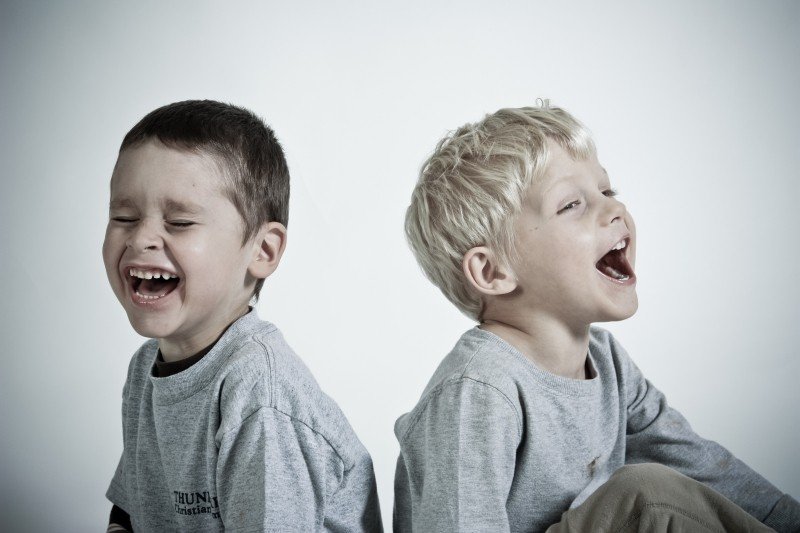| Age | What They Should Be Doing | Expressive Language Activities |
| 0-6 months | - Makes cooing sounds and blows raspberries
- Type of cry varies depending on the need (e.g. hunger vs. discomfort)
- Explores sounds k, g, b, p,m
- Begins producing one syllable sounds like “ma” or “ga”
- Engages in vocal play (e.g. squeals, growls, gurgles, yells)
| - Screen hearing to rule out hearing loss.
- Encourage production of sounds by imitating the sounds you hear your child produce.
- Get close to your child so that he sees your face when you are imitating his sounds or speak to him.
|
| 6-12 months | - Begins babbling single syllables with a variety of sounds
- Speech-like babbling develops closer to 9 months
- Responds vocally (e.g. ah, eh) when spoken to
- Tries to imitate words or sounds in his environment
- Uses gestures to communicate (e.g. points, waves, shakes head for “no”)
| - Consider consulting with an ENT if your child has frequent ear infections.
- Talk about what you are doing and about what your child is doing throughout the day.
- Sing songs that involve movement to encourage the use of gestures (e.g. Itsy Bitsy Spider). Teach your child to point to desired items.
|
| 12-18 months | - Develops the use of single words to communicate (e.g. dog, juice)
- Has a variety of vowels and consonants in their sound repertoire
- Speech is not clear but caregivers are able to understand some words
- Combines gestures with words (eg. raises hands and says “up”)
- Begins using social words like hi, bye, please and thank you
| - When reading books, ask your child to label pictures in the books.
- Teach simple, sign language to facilitate verbal language development.
- Teach your child to imitate environmental sounds during play (e.g. car sounds and animal sounds).
|
| 18-24 months | - Uses rising intonation at the end of words or phrases to ask questions
- Speech is understood 60-75% of the time (50-60% by unfamiliar listeners)
- Uses 2-word phrases to communicate (e.g. mama juice)
- Has labels (nouns) for many familiar objects
- Begins using verbs (eg. go, run) and adjectives (eg. hot, stinky)
- Says the sounds /p/ and /m/ correctly
| - Give your child time to answer questions before giving away the answer.
- Pick 1-2 words to repetitively practice during a 15-20 minute game. Encourage pretend play whenever possible.
- Talk about how things feel when you touch them (e.g. “the ice is wet and cold, here you feel it”)
|
| 24-30 months | - Asks questions more and more frequently
- Begins using present progressive –ing (e.g. eating vs eat)
- Begins using pronouns I, me, you, it
- May stutter, especially if learning new words rapidly
- Begins using auxiliary “is” (e.g. daddy is running vs. daddy running)
- Says the sounds /p/ and /m/ correctly
| - Emphasize the words you want your child to learn (e.g. “oh I see the car” and “look she is running”).
- Keep a close eye on your child’s speech and if you notice stuttering consider speaking with a professional. Do not call too much attention to the stuttering while interacting with your child.
- Play turn-taking games and teach your child to use phrases like “my turn” and “your turn.”
|
| 30-36 months | - Begins using prepositions in and on
- Uses some regular plurals (e.g. dogs)
- Uses some regular past tense verbs (e.g. walked)
- Produces phrases with articles “a” and “the” (e.g. the cat, a dog)
- Average phrase length is approximately 3 words per phrases
- Speech is understood 75-100% of the time (75%-80% by unfamiliar listeners)
- Says these sounds correctly /p, m, n, w, h, b, d, t, k, g, ing, f and y as in yellow/
| - Play “hide and seek” with objects. Use prepositions when asking your child where the object is hidden or to describe where you found the object.
- Speak with your child using simple, short phrases.
- Slow down your speech rate when speaking with your child.
- Hold items close to your face in order to call attention to your lips. This will help your child see how you are producing sounds.
|
| 36-42 months | - Sentences/phrases are frequently longer than 3 words
- The child is understood by strangers approximately 80% of the time
- Tells stories and tries to talk about events that have happened
- Vocabulary consists of approximately 1000 words
| - Encourage your child to describe pictures in books by asking questions while reading.
- Hold objects you are describing or naming close to your mouth to improve speech sound production
- Use the words first, then and last when retelling sequence of events and encourage your child to use these words
|
| 42-48 months | - Frequently uses 4 words in a sentence
- Can tell stories with the appropriate sequencing of at least 2 events
- Can have long, detailed conversations
- Asks where and what questions
| - Expand your child’s phrases by adding one more word and repeating what your child said. For example, Child says, “I want apples.” Parent says, “You want red apples” or “I want red apples.”
- Look for groups in the community where your child can socialize with peers his/her age
- Have your child help you prepare easy meals or snacks. This will help your child learn and use new vocabulary as well as sequence events (e.g. first pour, then stir)
|
| 48-54 months | - Expressive vocabulary consists of approximately 1,600 words.
- Produces sentences that are longer than 4.5 words
- Asks questions: who, why, when, how
- Asks questions: do you, are we, can we
- Tells detailed, imaginative stories
- Uses these sounds correctly /l, ch, s, v, z and j as in just/
| - Model pretend-play using new objects that your child does not regularly use. This improves imagination and creativity.
- Ask questions to learn about how your child is using an object and encourage your child to ask you too.
- Consult a professional if your child is still not speaking clearly.
|
| 54-60 months | - Child correctly produces the sounds t, r, l, ng but accuracy may still be inconsistent especially with /l/ and /r/ until approximately age 5 or 6.
- The child will begin to use consonant clusters more easily (i.e. says spoon instead of poon)
- Begins to use possessive pronouns “his” and “her”
- Uses words to discuss feelings and emotions
| - Talk about how things make you feel and why (e.g. I feel so happy because you gave me a hug).
- Create opportunities for your child to use words like “his” and “her” during play with action figures and dolls.
- Play dress-up and make up stories about the characters you are dressed up as.
|




